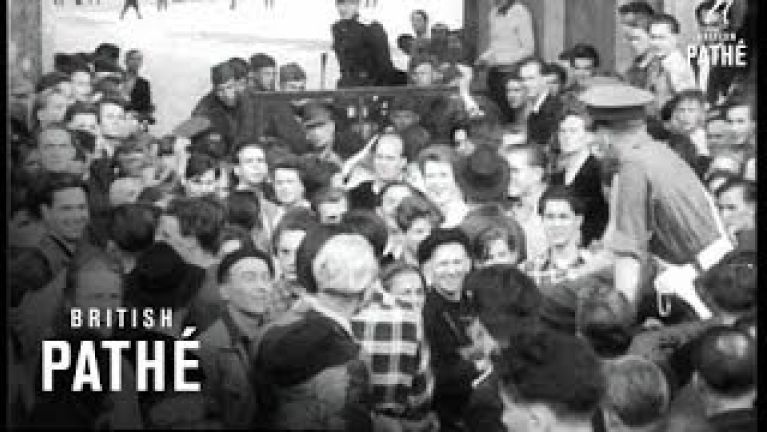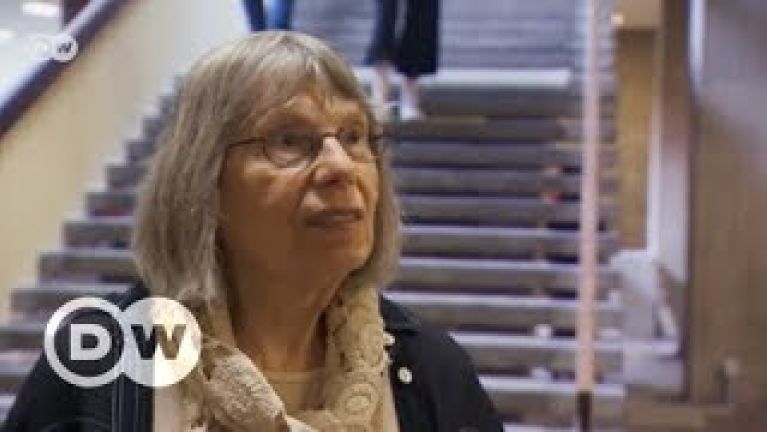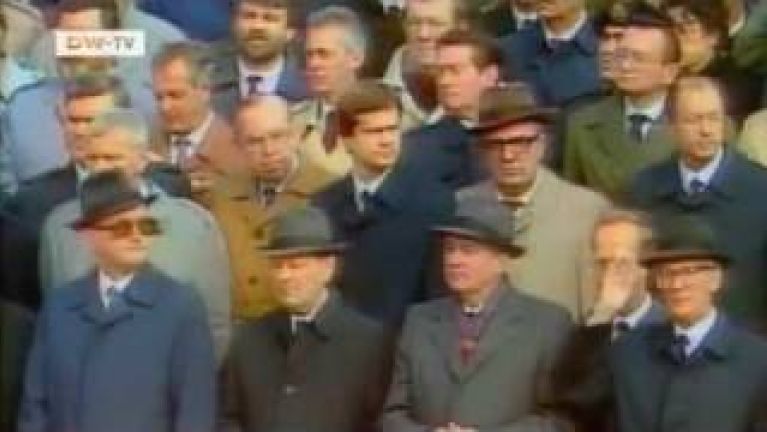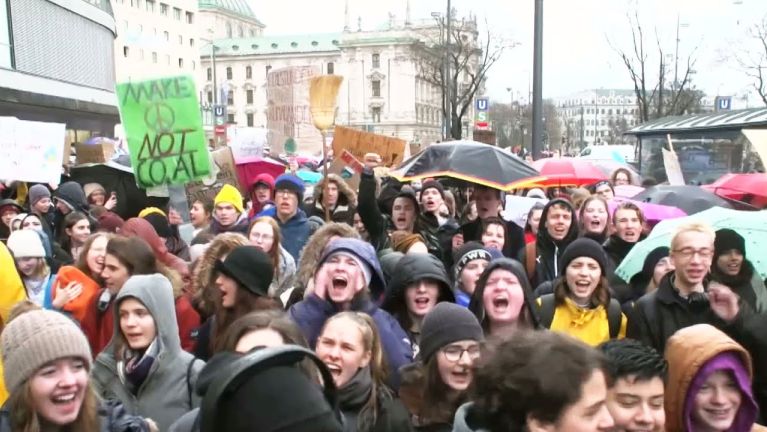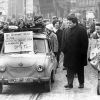Demonstrating for change
There have been numerous protest movements in Germany since the end of the Second World War. We present the most important of them.
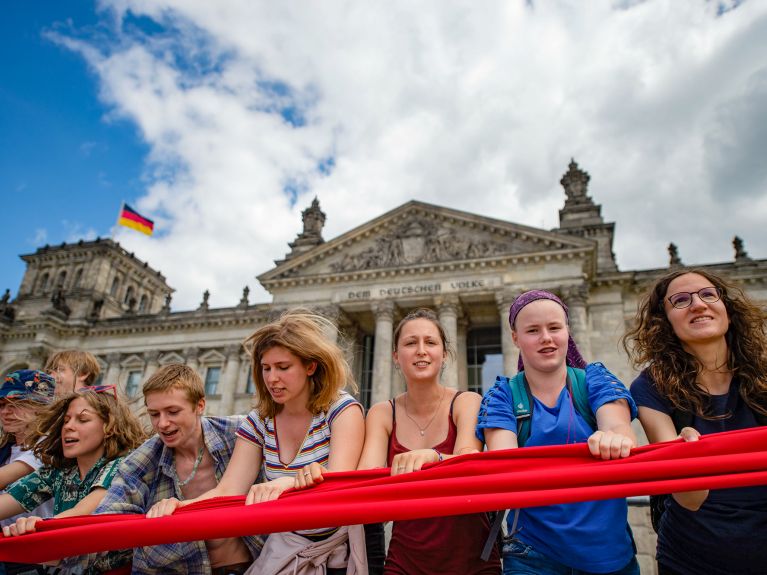
The popular uprising of 17 June 1953
The popular uprising of 17 June was the first mass protest in the eastern part of the divided Germany after 1945. Millions of people in the GDR demonstrated for better living conditions, more democracy and German unity. The Soviet Union sent tanks to East Berlin and helped the SED regime to break up the protests by force. 50 people died and hundreds were injured. Until reunification, 17 June was a public holiday, the “Day of German Unity”.
Dieses YouTube-Video kann in einem neuen Tab abgespielt werden
YouTube öffnenThird party content
We use YouTube to embed content that may collect data about your activity. Please review the details and accept the service to see this content.
Open consent formThe student movement
The first major protest movement in Germany was the student movement in the 1960s. It developed in parallel to student protests in the USA and Western Europe, and was initially directed against the Vietnam War. Protestors in Germany also strongly opposed the way Germany was handling its Nazi past. The post-war generation demanded that German history be critically reappraised and wanted to see society transformed. The protests reached their peak in 1968. The 1968 movement also spawned the new women’s movement and the anti-nuclear movement.
Dieses YouTube-Video kann in einem neuen Tab abgespielt werden
YouTube öffnenThird party content
We use YouTube to embed content that may collect data about your activity. Please review the details and accept the service to see this content.
Open consent formThe anti-nuclear movement
The anti-nuclear movement already began in the 1970s and appeared to be a futile battle given the euphoria that characterised the nuclear age. However, the nuclear reactor disasters in Chernobyl in 1986 and Fukushima in 2011 lent new buoyancy to the anti-nuclear protests. And today the movement has achieved its goal in Germany: in 2011, the Federal Government decided to phase out nuclear power and to accelerate the energy transition. Germany’s last nuclear power station will be switched off in 2022.
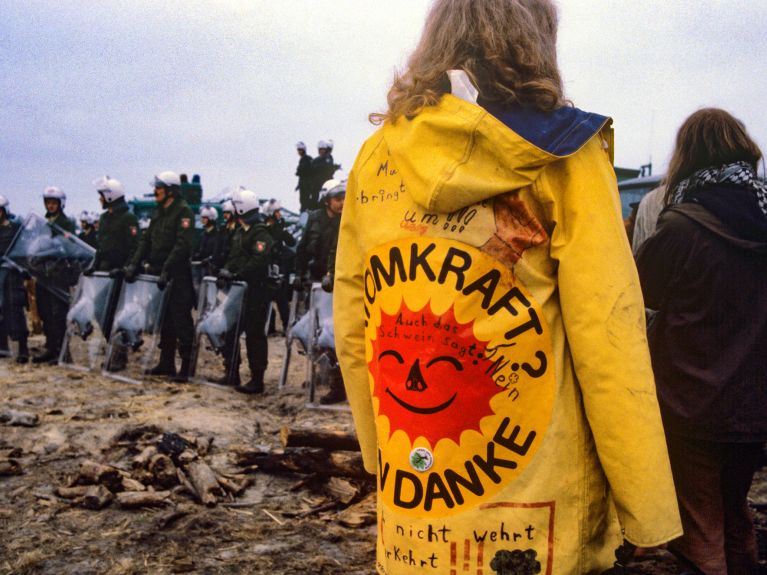
The Monday demonstrations
From 4 September 1989, thousands of East Germans took to the streets each Monday to demonstrate for a peaceful and democratic reorganisation of the system in East Germany. Having started in Leipzig, the Monday demonstrations soon spilled over to numerous other cities in the GDR in the autumn of 1989. Chanting “We are the people”, the demonstrators called for an end to the SED party’s rule and the freedom to travel to the West. The bravery and civil courage shown by the peaceful protestors led to the fall of the Berlin Wall on 9 November 1989 and to the reunification of Germany on 3 October 1990.
Dieses YouTube-Video kann in einem neuen Tab abgespielt werden
YouTube öffnenThird party content
We use YouTube to embed content that may collect data about your activity. Please review the details and accept the service to see this content.
Open consent formFridays for Future
Since 2018, pupils around the world have been demonstrating for more effective climate protection. In Germany, it was pupils in the small town of Bad Segeberg who first went out on strike, on 7 December 2018. Ever since, tens of thousands have been taking to the streets every Friday, in Berlin and many other cities, calling for environmental and climate protection. In the meantime, more and more adults have also joined the Fridays for Future protests.
Dieses YouTube-Video kann in einem neuen Tab abgespielt werden
YouTube öffnenThird party content
We use YouTube to embed content that may collect data about your activity. Please review the details and accept the service to see this content.
Open consent formYou would like to receive regular information about Germany?
Subscribe here:
